Communication Networks
Data is displayed for academic year: 2023./2024.
Lectures
Laboratory exercises
Course Description
Introduction to communication networks. Network architectures, classification and topology. Communication channel and information packet. Communication protocols, layered models: Open System Interconnection Reference Model (OSI RM), Internet model (TCP/IP). Standards and global coordination in the Internet. Network layer, Internet Protocol and basic concepts of internetworking and routing in the Internet. Transport layer protocols, TCP and UDP. Application layer protocols and basic Internet services: naming and Internet domains, e-mail, web and other selected services. Fundamentals of network and applications security. Internetworking from local to global level, using academic and research network as an example. Network evolution and selected topics in internet technologies.
Study Programmes
University undergraduate
[FER3-EN] Computing - study
(4. semester)
Learning Outcomes
- define concept, architecture and organisation of communication networks
- explain how communication networks operate and their functionality
- apply knowledge about communication networks and protocols
- analyze protocol functions and services, as well as protocol stacks in order to select appropriate ones
- analyze organization of public and private networks based on IP protocol
- define secutity threats and available solutions in the Internet
- design network models including local area networks, Internet subnetworks and Internet access
- evaluate communication solutions based on TCP/IP protocol stack
Forms of Teaching
Lectures
Lectures according to the schedule.
LaboratoryLaboratory assignments according to the schedule shown at the introductory lecture. The lab consists of 3 cycles, of 5 hours each, which include individual preparatory study, entry quiz, performing the assignment in the lab, and written examination.
Grading Method
| Continuous Assessment | Exam | |||||
|---|---|---|---|---|---|---|
| Type | Threshold | Percent of Grade | Threshold | Percent of Grade | ||
| Laboratory Exercises | 20 % | 15 % | 20 % | 15 % | ||
| Homeworks | 0 % | 10 % | 0 % | 10 % | ||
| Class participation | 0 % | 10 % | 0 % | 10 % | ||
| Mid Term Exam: Written | 0 % | 30 % | 0 % | |||
| Final Exam: Written | 0 % | 35 % | ||||
| Exam: Written | 0 % | 65 % | ||||
Week by Week Schedule
- Types and architectures of communication networks; Physical and logical organization of Internet, Communication network architecture and layered reference models (OSI and TCP/IP)
- Transmission network technology, topology, organization, and standardization, Multiplexing techniques and multiple access
- Physical and MAC layers in local area networks (LANs), Multiple access, Media access control and logical link control. Example: 802.3/Ethernet.
- Basic network components and architectures for switching and routing, Routing protocols, Switching and routing in LANs; local networks interconnection
- Communication protocols, Network and transport layer protocols: case studies focused on Internet Protocol (IP), Transmission Control Protocol (TCP); And User Datagram Protocol (UDP)
- Communication protocols, Network and transport layer protocols: case studies focused on Internet Protocol (IP), Transmission Control Protocol (TCP); And User Datagram Protocol (UDP)
- Communication protocols, Network and transport layer protocols: case studies focused on Internet Protocol (IP), Transmission Control Protocol (TCP); And User Datagram Protocol (UDP)
- Midterm exam
- Communication protocols, Application layer protocols: case studies focused on Hypertext Transfer Protocol (HTTP), Simple Mail Transfer Protocol (SMTP), Post Office Protocol (POP), Internet Message Access Protocol (IMAP), File Transfer Protocol (FTP), Telnet
- Communication protocols, Application layer protocols: case studies focused on Hypertext Transfer Protocol (HTTP), Simple Mail Transfer Protocol (SMTP), Post Office Protocol (POP), Internet Message Access Protocol (IMAP), File Transfer Protocol (FTP), Telnet
- Communication protocols, Application layer protocols: case studies focused on Hypertext Transfer Protocol (HTTP), Simple Mail Transfer Protocol (SMTP), Post Office Protocol (POP), Internet Message Access Protocol (IMAP), File Transfer Protocol (FTP), Telnet
- Fundamentals of network security, types of threats and attacks in networked environments. Cryptographic protection: symetric and asymetric algorithms, hash functions, digital signature, key management. Digital certificates. Public key infrastructure (PKI). Protection of computers and networks. Case studies focused on vulnerabilities of fundamental Internet protocols and applications. Protection methods at the network- and upper layers.
- Fundamentals of network security, types of threats and attacks in networked environments. Cryptographic protection: symetric and asymetric algorithms, hash functions, digital signature, key management. Digital certificates. Public key infrastructure (PKI). Protection of computers and networks. Case studies focused on vulnerabilities of fundamental Internet protocols and applications. Protection methods at the network- and upper layers.
- Network interconnection in the Internet, example: academic and research network. Selected topics in Internet technologies.
- Final exam
Literature
For students
General
ID 209654
Summer semester
6 ECTS
L1 English Level
L2 e-Learning
60 Lectures
0 Seminar
0 Exercises
16 Laboratory exercises
0 Project laboratory
0 Physical education excercises
Grading System
85 Excellent
70 Very Good
60 Good
50 Sufficient


 Pristupačnost
Pristupačnost







